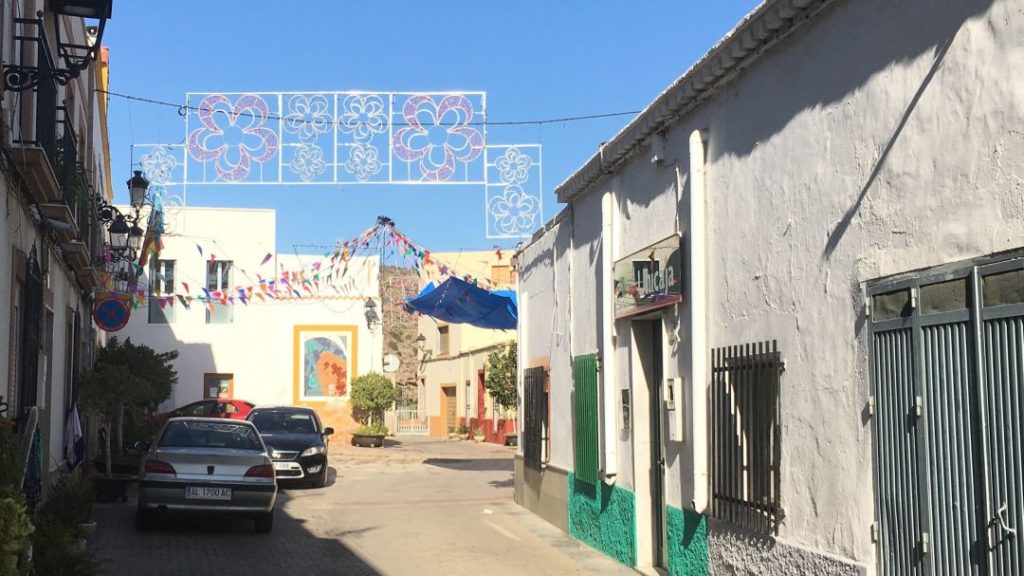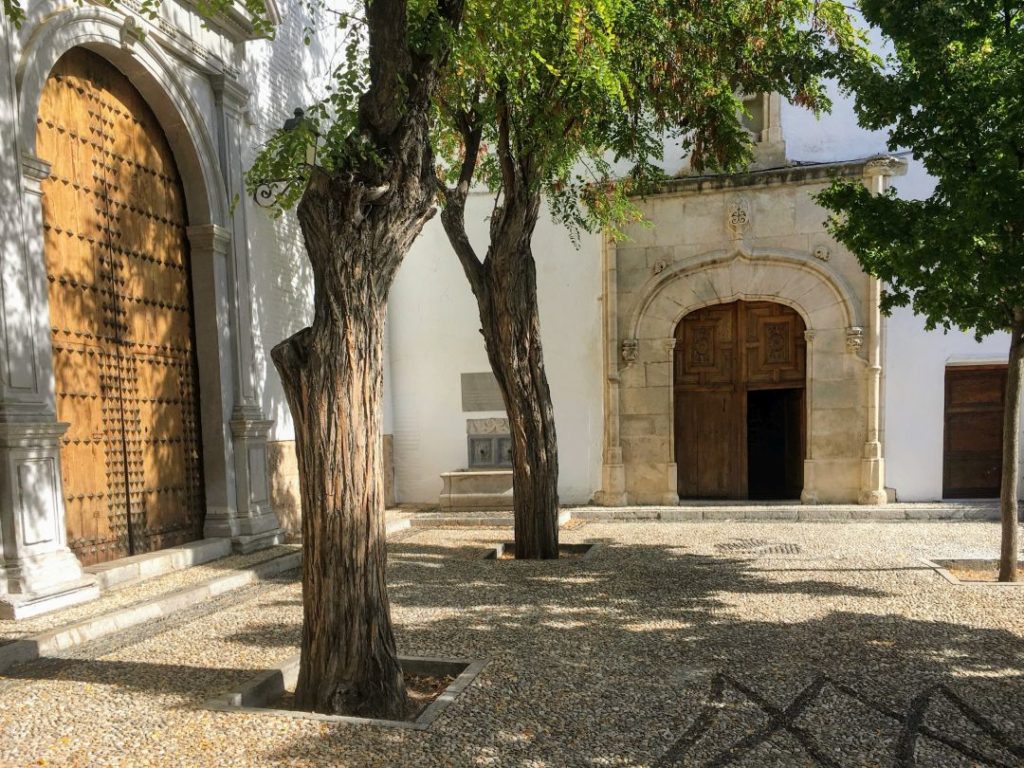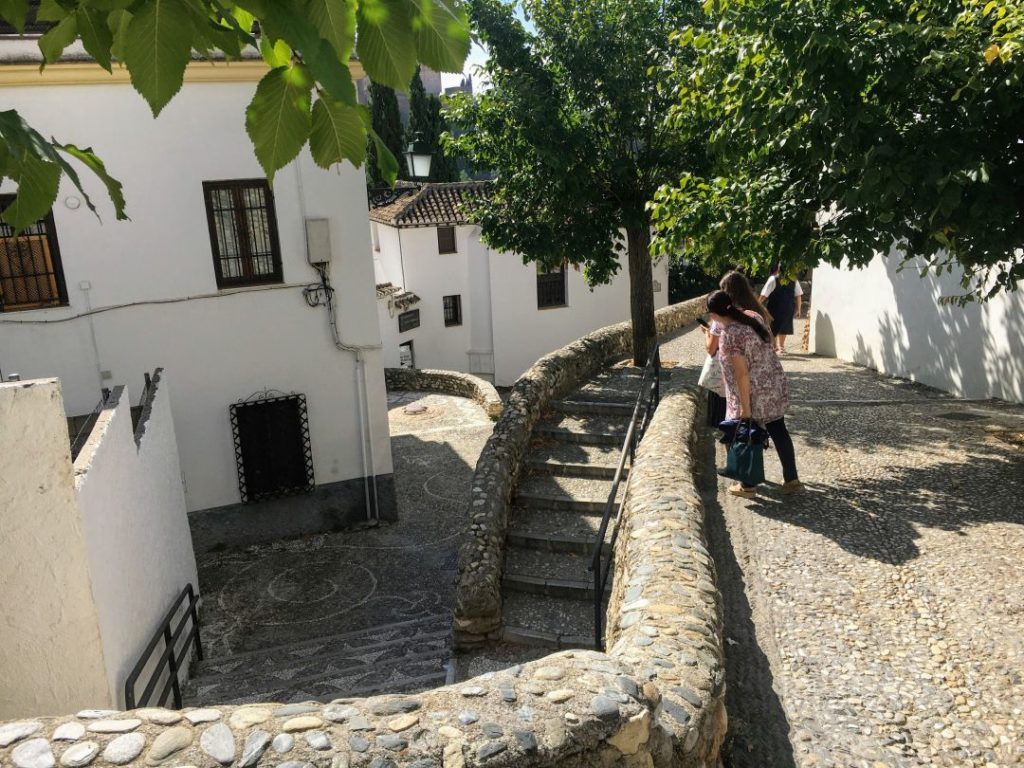Out of Almería early in the morning. Finding the yellow arrows. Passing through Huercal, Pechina, Rioja, Gádor before comming to Santa Fe.
After Huercal the road goes down to Río Andarax. Very wide, totally dry riverbottom which I had to follow on and off many times.
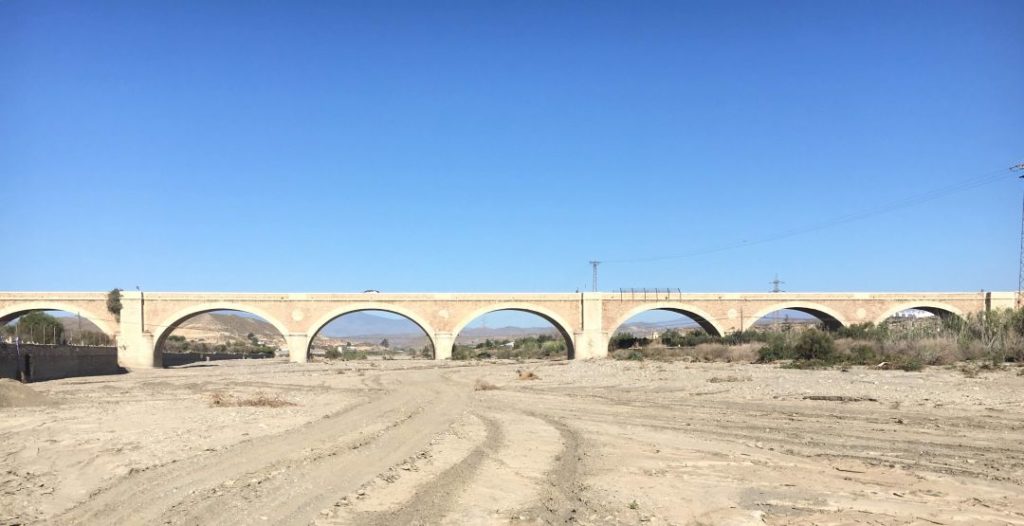
Really a hot day, so in Pechina I stopped and got some water in the shadow at the plaza. The road continued again down to río Andarax. After 2km I came to Rioja. Just outside Rioja I found bar Juan Rueda where I got some thing to eat and drink.
I reached Santa Fe de Mondujar around two o’clock. A beautiful little white pueblo. Narrow streets, very peaceful. There was a little supermercado and a bar, of course.
The next morning ‘café y tostada’ at the bar before I continued to Alboloduy.
From Santa Fe the ascent leads into the Sierra de los Filabres. The paved way ends in the watercourse of Gergal and then 5 km of narrow paths and strong ascents, of awesome landscapes and stunning views of the Alpujarra Almeriense.
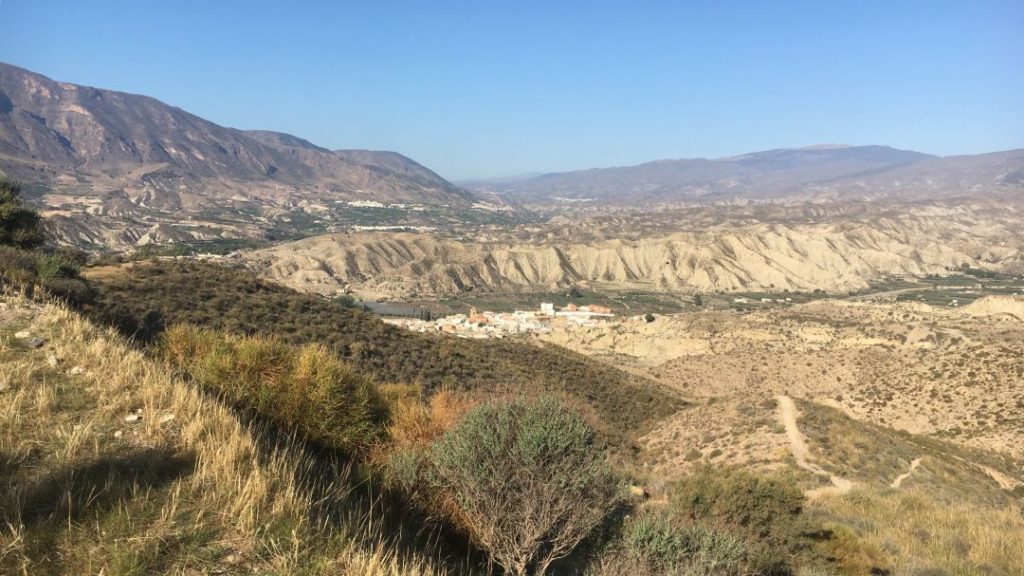
On the descent, I was welcomed by the Natural Park of Sierra Nevada and the so-called “pueblos blancos” : Alhabia, Alsodux, Santa Cruz de Marchena and Alboloduy.
In Alhabia I had a stop at a nice bar at the plaza besides the church. It was incredibly hot, so I also took a break in Santa Cruz de Marchena in the shadow under a big tree.
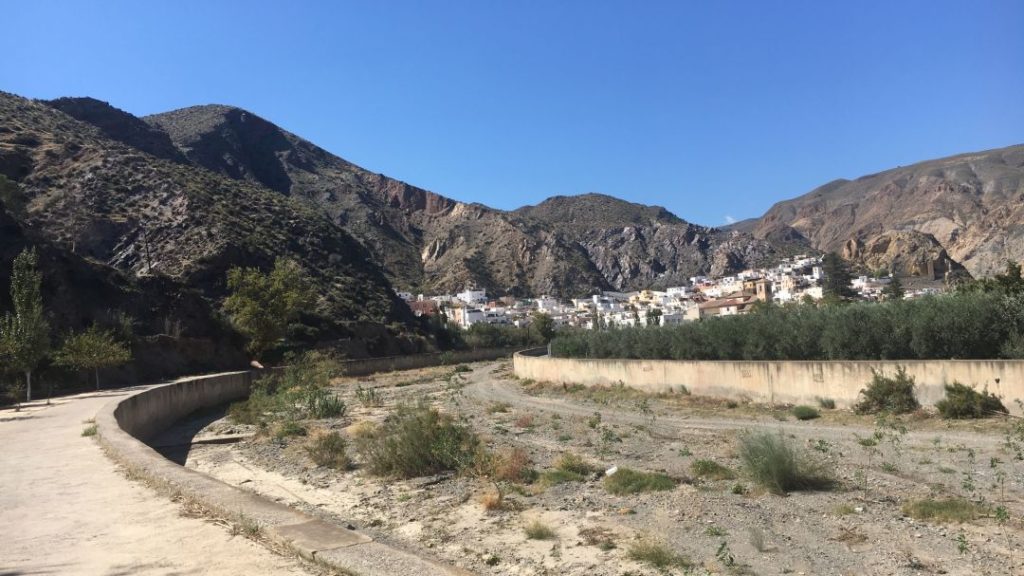
The last few kilometers to Alboloduy was along the río Nacimiento. Alboloduy only appeared after the last turn of the road. It was nestled in the valley between two hillsides.
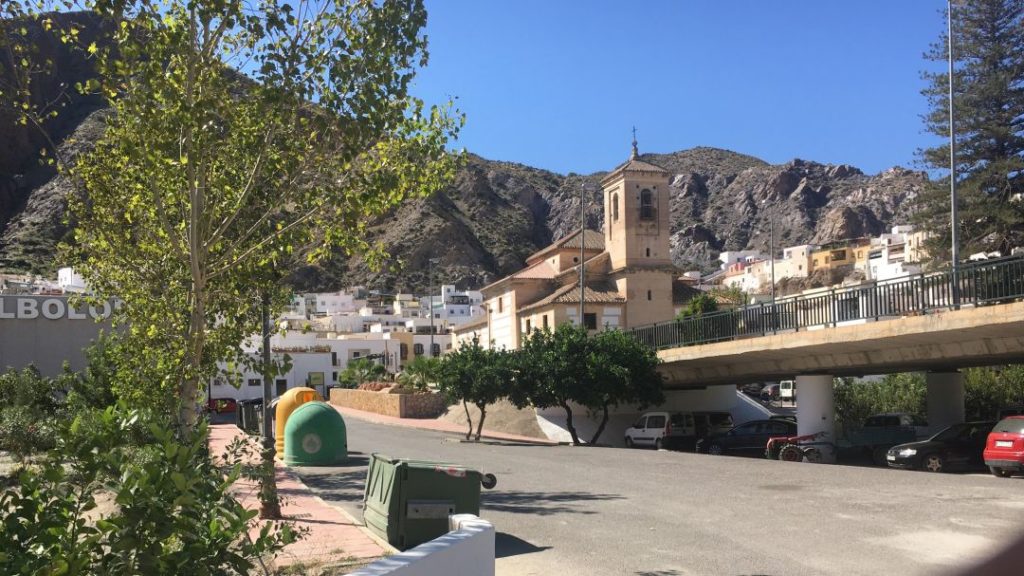
The albergue in Alboloduy was just opposite the farmacia. Charming little pueblo. Very, very quiet.
Next morning leaving Alboloduy, I followed the river upstream some 3 km until an area with heavy vegetation all around. Here the route took a steep path going up the half hillside on the right to get to the road which I followed all the way to the Llano del Campillo. Some metres behind the Water Cistern (“Aljibe”), the path continued again down to the river.
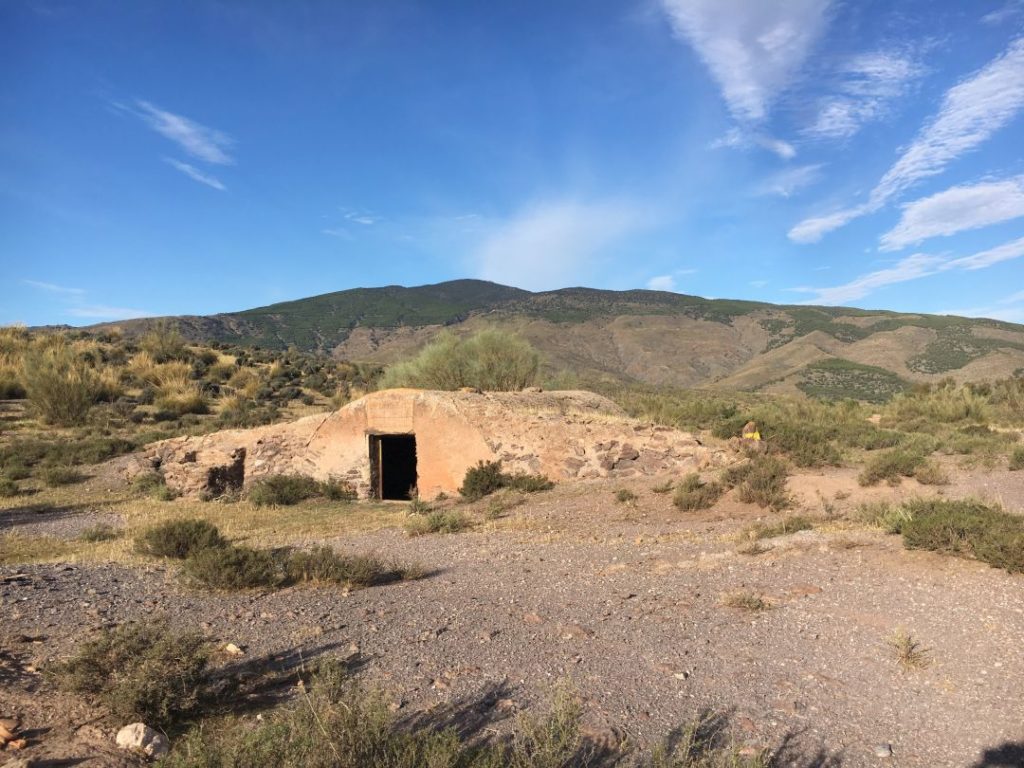
I arrived at the village of Nacimiento through a natural reed tunnel of the Sierra Nevada Natural Park. Very special and beautiful.
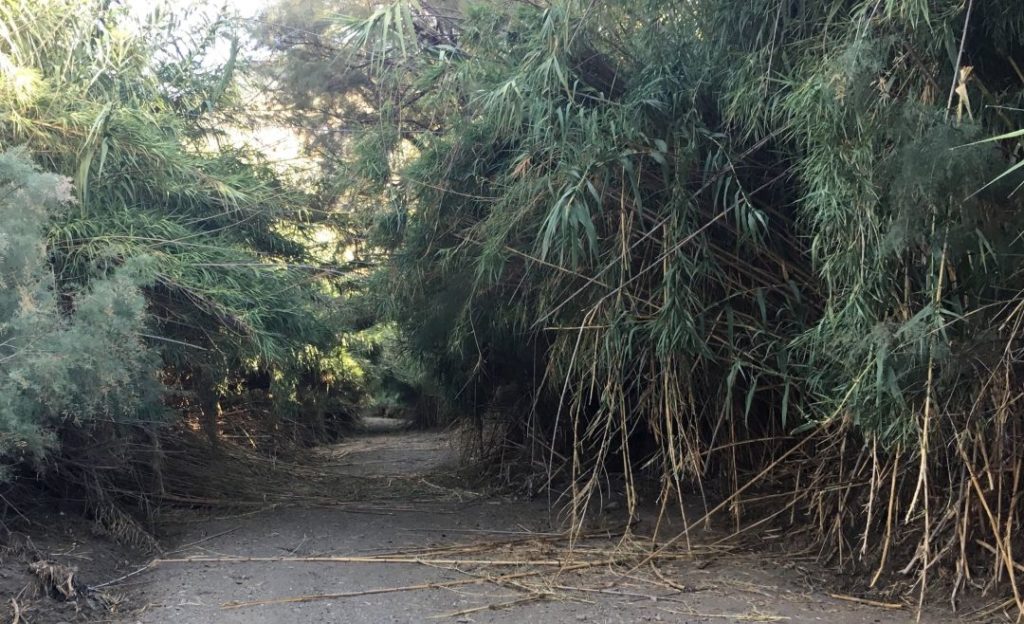
The riverbed is again the base of the camino, now inside the medium-high track of the valley.
Sierra Nevada is the south hillside and Los Filabres Mountain the north wall along the camino.
Threshing floors, mills, olive oil mills, irrigation infrastructures, slate country houses and mine quarries are scattered along these urban areas: La Rambla Encira, Los Gregorios, Doña Maria and Ocaña.
Following the river, I come to Las Juntas. After crossing the river via the local road, crossing the former National one, I then descend to the watercourse of Abrucena and goes upstream until Abla.
I found the albergue in the very end af the village with help from local people. A gorgeous overview of Sierra Nevada and the close village of Abrucena. Narrow streets going up and down. Really a charming place.
Next morning on my way out of Abla I cross the Nacimiento River to get to the Camino Real which, for centuries, was used by the people, troops, merchandise, etc. that circulated between Granada and Almeria. Then I return again to the river and walk upstream until the village of Fiñana.

Suddenly you see this white village in front of you, on top of a hill. Looks very monumental. The plaza at the church is very charming, with people enjoying the fine weather.
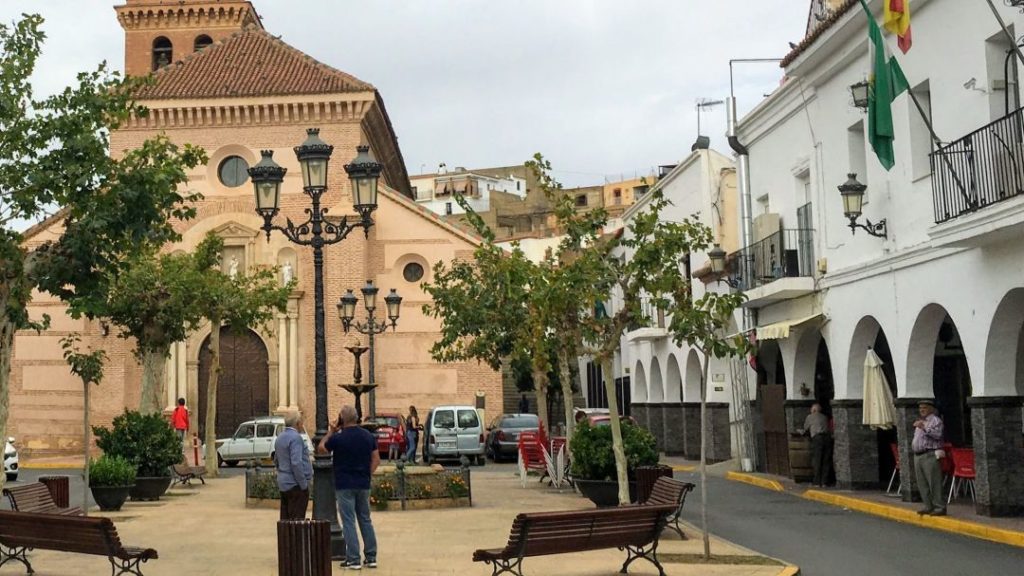
On my way to La Huertezuela I pass by empty buildings and other signs of great activity. Now there is nothing.
The next village is Huéneja. It’s a nice place, but absolute no activity. Today it is October 12 and a national holiday. It commemorates the anniversary of Christopher Columbus’s first arrival in the Americas in 1492.
My albergue is an apartment in a residential, third floor. Very ok, and I’m still on my own.
The next day, a sunday is a fine walk, passing small pueblos: Dólor, Ferreira and La Calahorra.
In Calahorra I got Supa de Ajo in the restaurant. I thought about visiting the castillo, but because of the heat and the strong sun I simply continued to Alquife.
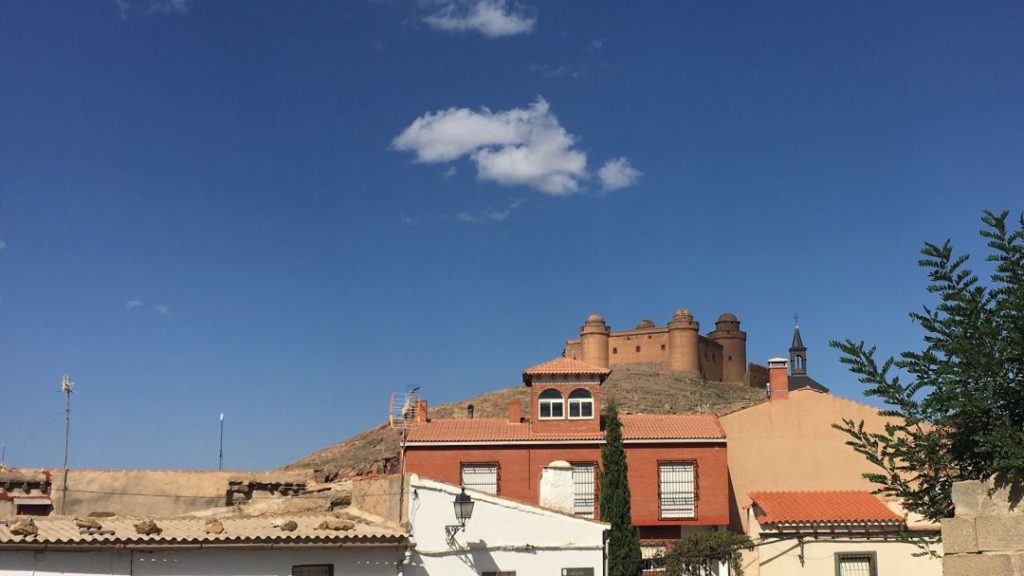
Alquife has been a village of a strong mining past where the largest
open-pit mine of Andalucia is located. The iron mineral was taken out through its own Linares-Almeria railway branch line. After a near shut
down of this mine in the 90s, today a reopening is being worked out due to the mineral price increase.
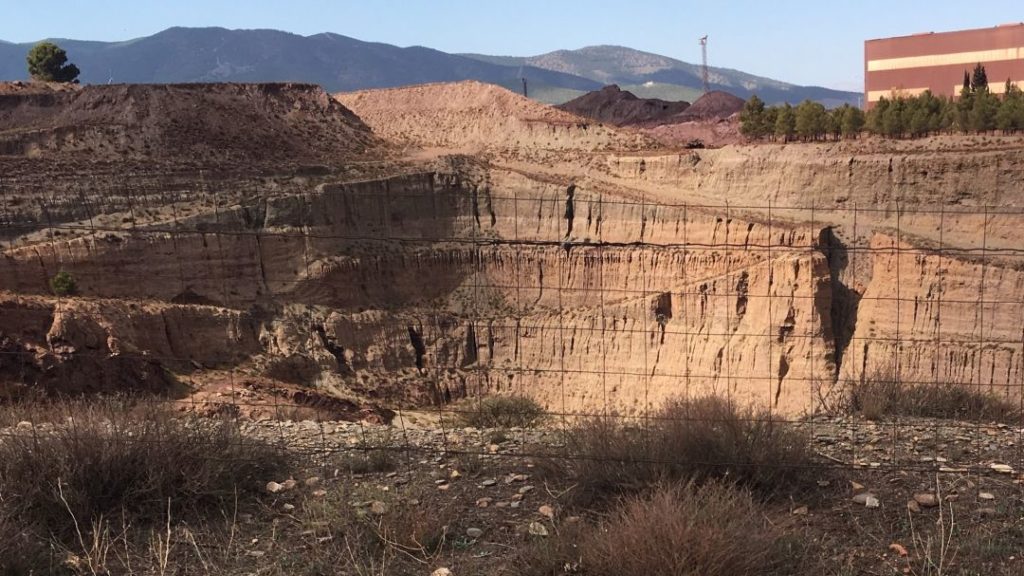
My albergue was a private one, owned by Manuel.
Leaving towards Jerez one can see the mass of the Picon de Jerez (direction SW), the most conspicuous “3000 metres” of Sierra Nevada. The landscape is more than beautiful.
The road goes over the bridge of the Lanteira’s watercourse. Some kilometers after passing it, I cross the Guadix River and follow the path towards Jerez del Marquesado.
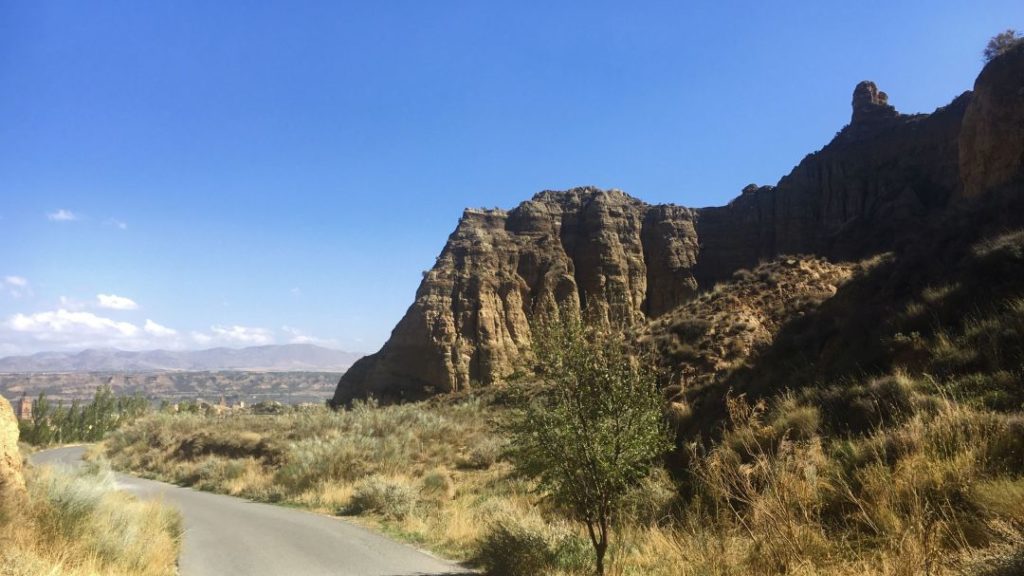
A small road heads towards Cogollos de Guadix. Then a short walk to Guadix. Really a special city.
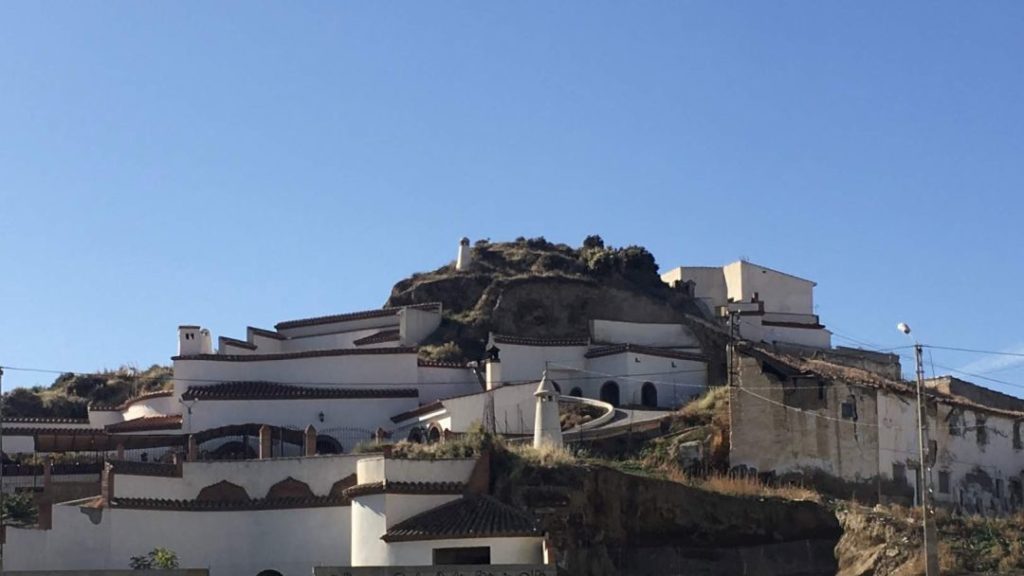
Next morning I decided to take the bus to La Peza, and use thr morning to see a little more of the town. It turned out to be a bad idea. I could see the landscape from the bus, bypassing Parullena and Graena, and it looked very spectacular.
My albergue in La Peza was the first floor in a building in the schoolyard. There was not much activity in this little pueblo.

I started early the next morning. Fantastic day and a most beautiful landscape.I had a fine room in the hotel in Quentar
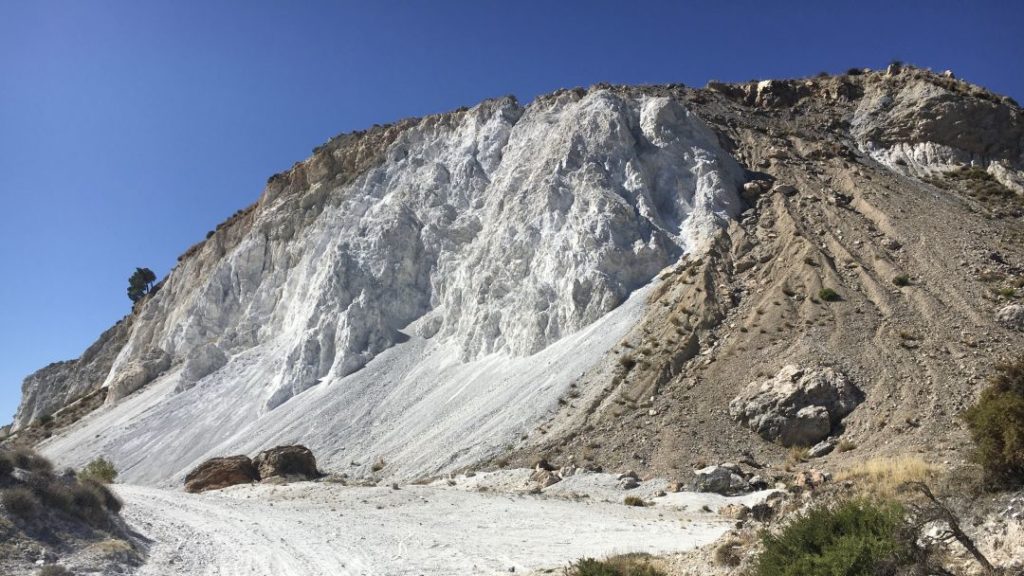
Easy walk to Granada. Olive trees all around.
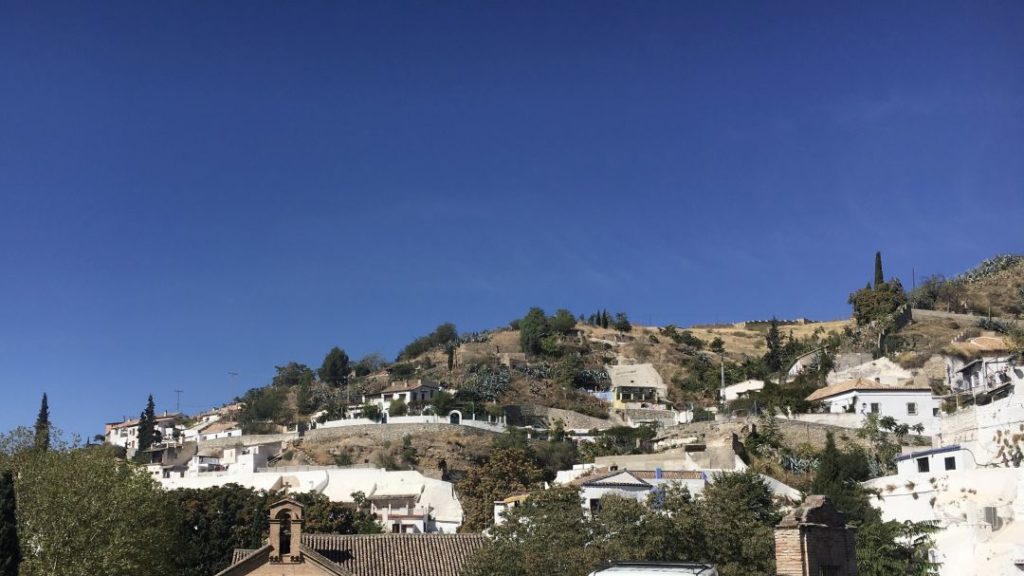
My albergue is Casa Mercader de Sedas in Calle Escudo del Carmen. Ok place, but the room with six bunkbeds was a little crowded. I stayed there for two nights and changed the third day to a super place, Residencia de Realejo.
The morning I left Granada there was a little bit of rain. I used the umbrella 10-20 minutes, then it was over. On my out of Granada I suddenly saw another peregrino.
At a roundabout, he took a wrong path and I was too slow to stop him. Later it was me who went wrong. When I got back to the route he suddenly came from the right. We then walked together to Pinos Fuente, Carlos and me.
I stopped in Pinos Puente and stayed overnight at hotel. The double room was ok and the food more than good. There was not much of the city itself.
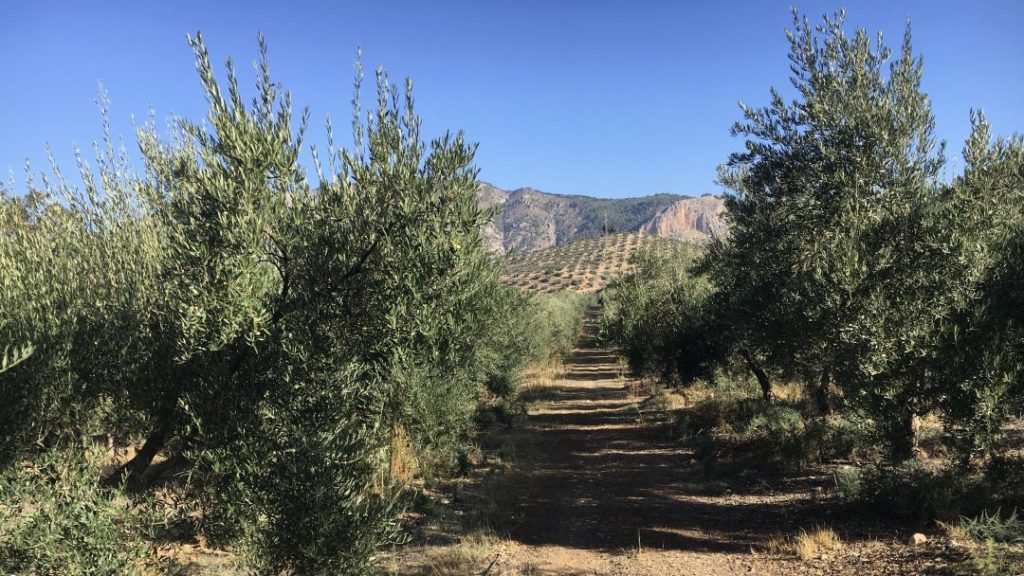
The next day was as beautiful as the previous ones. Thats the sun and a little too hot. Still olive trees in every direction. Nice little break in a little bar in Los Olivares, bar Los Martinez. Then a steep ascent to Moclín, where I spend the night at Fundación Moclín, a lovely place.
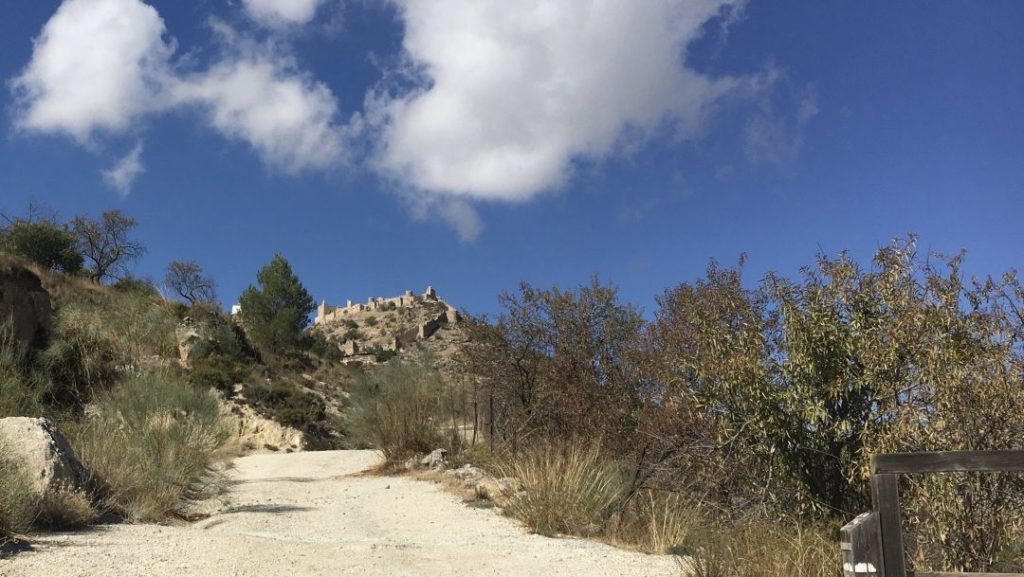
The city is beautifully situated, with church and castle a few hundred meters higher up. At the hostel there were already two pilgrims, later 3 women from Canada (Maureen, Ann-Luisa, Karen). And then another red-headed Irishman.
There was of course a bar in town, but it was closed on Mondays. And the supermercado first opened late, but that’s how it is in Spain.
The next morning I went to the bar to have breakfast. It first opened a quarter past eight, so I got off a little late.
I had booked a room in Alcalá la Real. It was very central, but rather boring. So was the city. And then it suddenly became a rainy evening.
The next day I had a small stop in Ventas del Carrizal, where I happened to spot a restaurant in a small park. A mile further on, I met the three Canadians. I followed them to Alcaudete. It was really nice.
We were all staying in hostal Hidalgo. They had booked everything in advance from Canada, and I got my own room on the second floor. We had a nice menu del Peregrino together in the restaurant.
The next stage to Baena was about 25km in the sun and with sun and absolutely no facilities along the way. But plenty of activity in the fields with olive harvest. Very fun to see how it goes.
Baena was very charming, steep streets and a good restaurant on the plaza del Constitución. I met Carlos and a couple of others from Moclín. We spent the night at the albergue Ruta del Califato.
Last day with the three Canadian women. And another day without service on the way. In Castro del Rio we stayed at A Ka la Sol.
I took an extra day in Castro del Río. Then a short trip to Espejo. It was yet another white city. I liked it. It was Sunday, so there was lively at Paseo de Andalucía and at the bars.
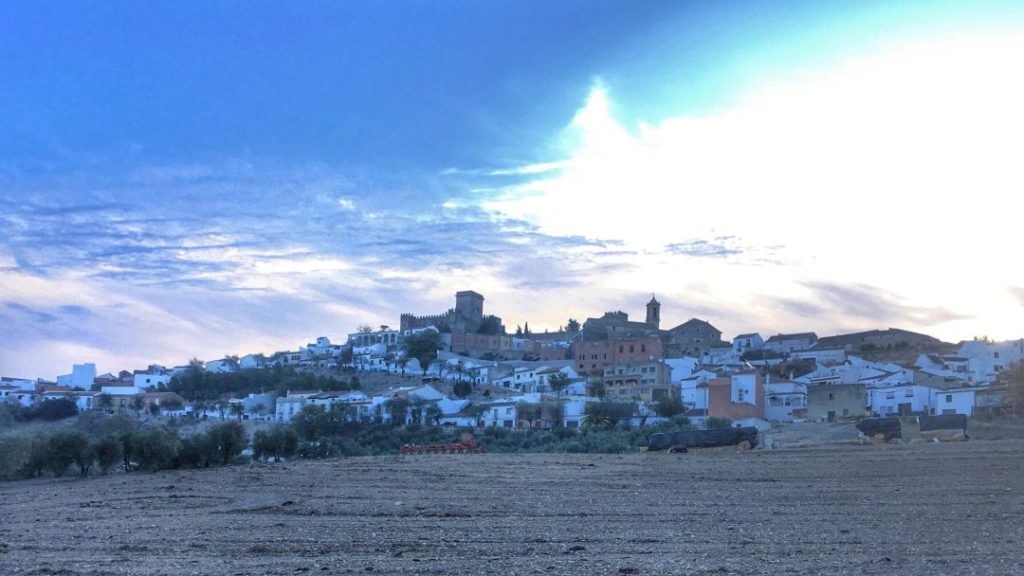
The last little town I came to was called Santa Cruz. The last stretch of road was quite uncomfortable, simply on the N-432. But I got a nice room and good food at my hostel. The city was devoid of life and activities. I did not find a supermercado. In turn, a bar from the last century with a photostat of Che Guevara and bust of Lenin and sentences on the walls.
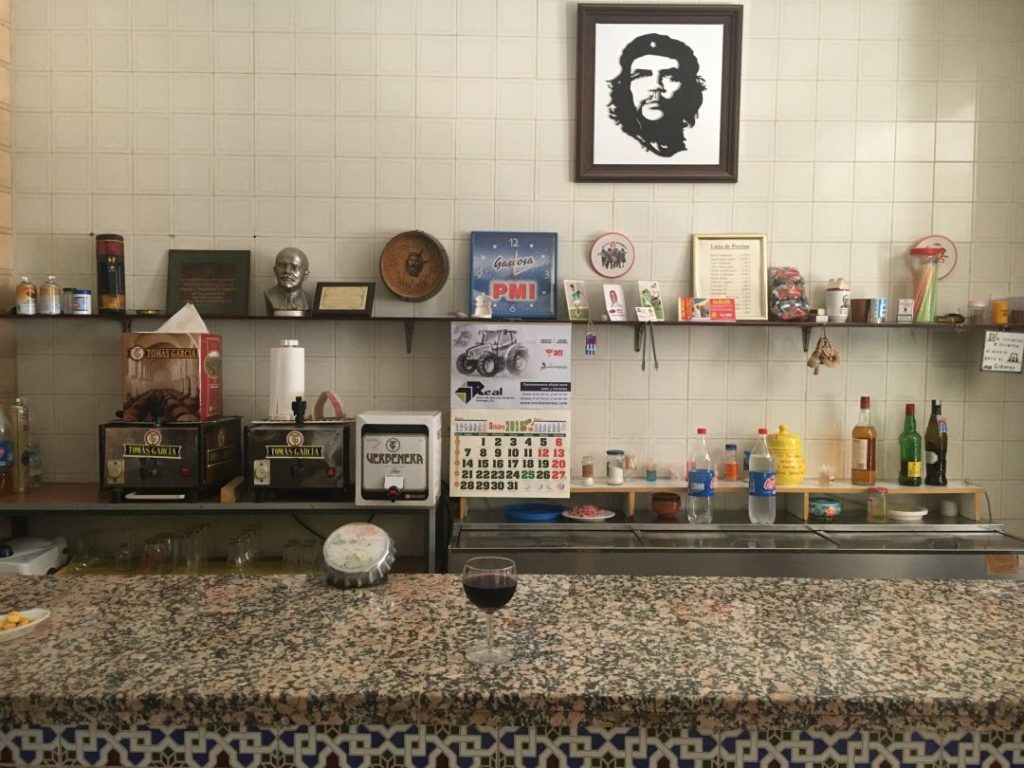
Last hiking day was a hot ride, no sun protection (except for my umbrella) and no breaks on the way. In Cordoba I ordered a big cold beer at the first bar.
What a city. Very beautiful, very charming.


